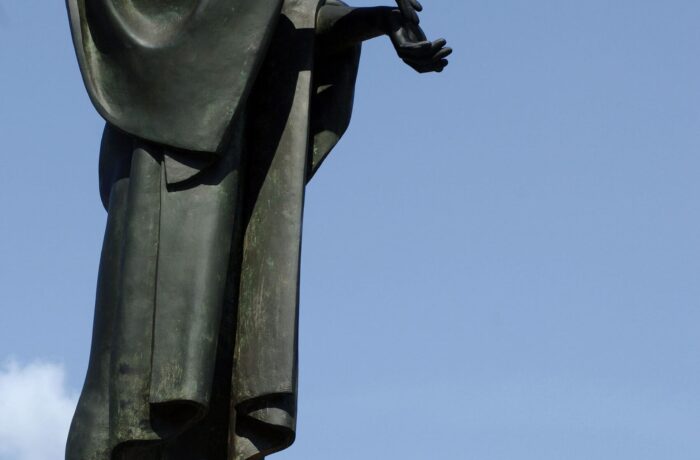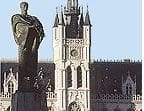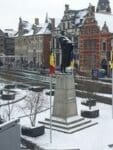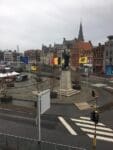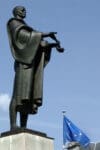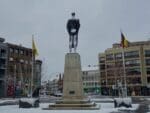HET WOORD (IDEL IANCHELEVICI)
We cannot ignore it! Our attention is unavoidably drawn to one of the most famous sights of Sint-Niklaas: the large sculpture ‘Het Woord’(‘The Word’), while in its background we see the towers of the City Hall belfry and the Onze-Lieve-Vrouwekerk.
Since 1988 the Market Square is dominated by the monumental statue ‘Het Woord’. High on its pedestal stands the figure of a man, tall in stature. With his head held high he watches over the city. His pose is solemn. The folds of his draped cloak contrast with the smooth skin at the back side.
The sculpture has several meanings. During the Expo 58, also known as the Brussels World Fair, it stood near the pavilion of civil engineering under the name ‘Hommage au Génie humain (‘Tribute to human genius)’. It later got its present name: ‘Le Verbe’, French for ‘Het Woord’ (the Word) with a clear reference to St John’s Gospel. The artist looked for a city with a large student population and considered the capital of the Waasland area a suitable location. According to his wish the statue was placed on a 5-metre high pedestal on the southern point of the Market square. Since then one cannot imagine the centre of Sint-Niklaas without this imposing figure!
The statue was sculpted in the classical way. Kunst in de Stad found a specialised bronze caster in Milan, who cast it in three separate parts. These were assembled into one and transferred to Sint-Niklaas. The bronze sculpture is five metres high and weighs two tonnes.
Idel Ianchelevici is a Belgian sculptor of Romanian origin. In 1928 he left his native country and completed his studies at the academy of Liège. In 1933: First prize sculpture at the Liège Académie des Beaux-Arts de la Ville. In the same year he marries the Belgian Elisabeth Frenay and moves to Brussels. Being a Jew, he has to go into hiding during the Second World War. He was a friend of and largely influenced by August Vermeylen, one of the great Belgian social thinkers. He moves to France in 1950. His creations can be admired in museums in La Louvière (Belgium) and Maisons-Laffitte (France).
- 09-Het Woord-20040511
- 09-Het Woord-Kurt-De-wree-2
- 09-Het Woord-Kurt-De-wree-1
- 09-Het Woord
- 09-Het Woord-Dehandschutter
Kunst in de Stad - June 25th 1988

